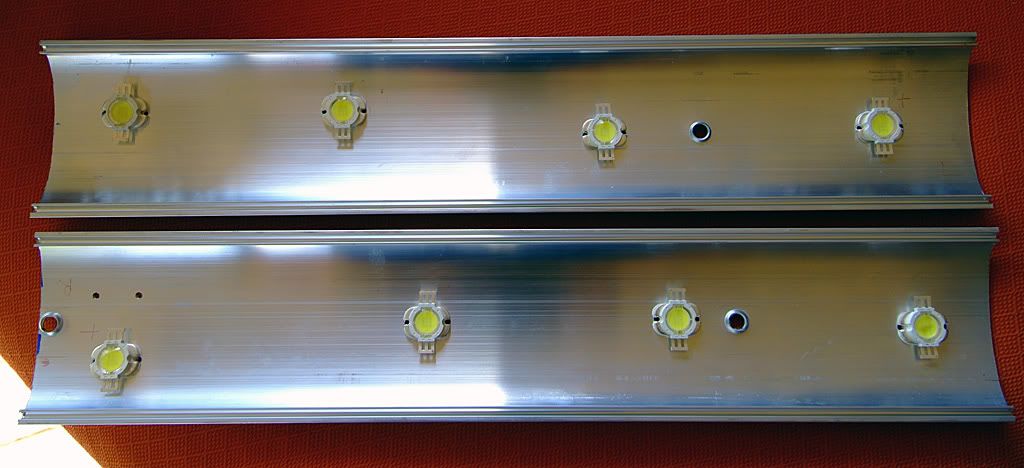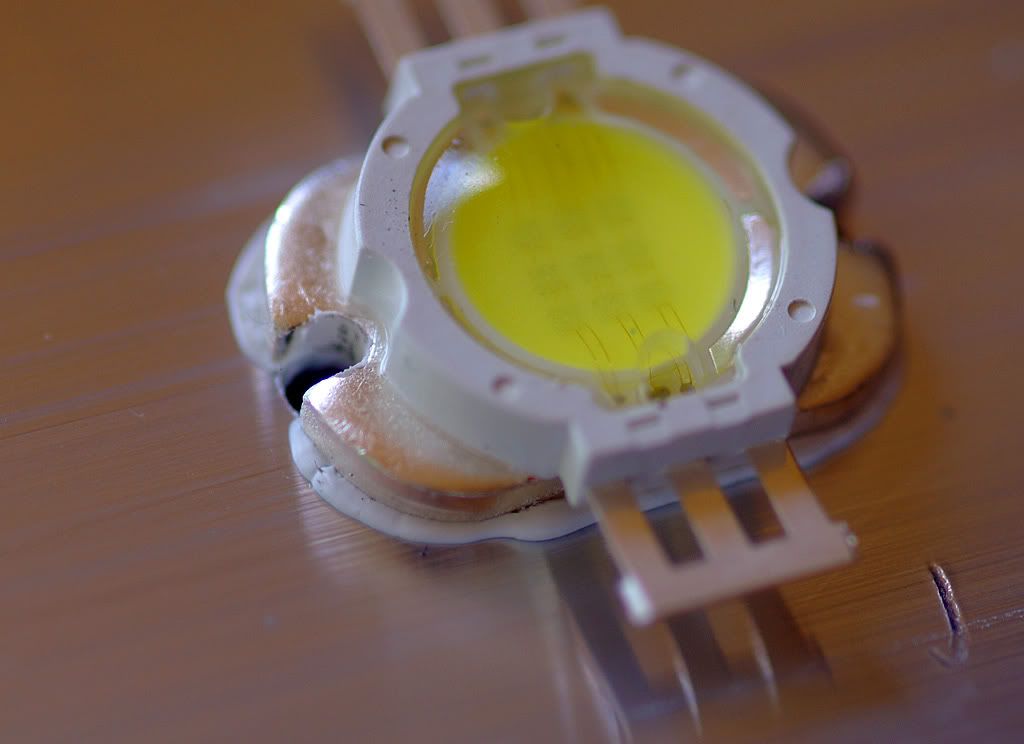Well, I have completed my High Power LED Aquarium Lighting project. I received all the parts this week and put it all together within two hours. Frankly, I was hoping that it was going to be a little more challenging than that but this was one of the easiest projects I have ever completed. That is good news because that means anyone in the forum should have no difficulty in doing this for themselves.
I still need to do the lumen measurement tonight inside the tank and the write-up but I will spend some time tomorrow completing my notes and pictures and have this posted by the end of the day. I did do an air-reading lumen check tonight just to see a quick comparison to the air-reading data I already have from the low power LED lighting system and the Fluorescent lighting system from PART-1 of this project. The results are below,
As you can see the results are vastly different from the previous tests. Over 20 times the lumen output is achieved using these high power LED emitters compared to the Fluorescent bulbs and over 14 times the output compared to the low power LED lights I used in PART-1. This should translate from the current 18 lumen output measured at the bottom of the aquarium (underwater) using the low power LEDs to over 100 lumen using the High Power LEDs. This is a guess and I will have the actual data tomorrow.
The dissasembly and assembly of the project components was very easy and I already have them installed and operating on my aquarium. The results are simply amazing. Anyone who has marveled at the (very high priced) high intensity LED light systems used on Salt Water Aquaria (either in stores or on the WEB) will see an instant similarity on my Very Low Cost - High Power LED DIY system on my fresh water aquarium. All I can say is that visually there is an enormous difference. My aquarium looked like it was inside a cave compared to what it looks like now. One very interesting feature is that you can now see water ripples reflected in the light across the plants and bottom. A very natural day light tank condition now exsits.
The High Power LEDs provide a pure white full spectrum 6500 - 7000K range of light. I confirmed with my spectrophotometer that the LEDs provide a full spectrum including PAR light (400 to 700 nm). Vivid colors are seen everywhere and the colors in the fish stand out exceptionally well. The plants are going to love this set-up.
For those wanting to see what my 55 gallon aquarium looks like right now - I have activated my FISH-CAM. Click on the link below and wait for connection to see it tonight and the rest of this week.
http://71.170.193.21...ndex.html?cam=0PART-2 of this DIY Aquarium Lighting project using high power LED lights will be posted tomorrow.
Usil
Edited by Usil, 26 October 2011 - 07:37 PM.



















